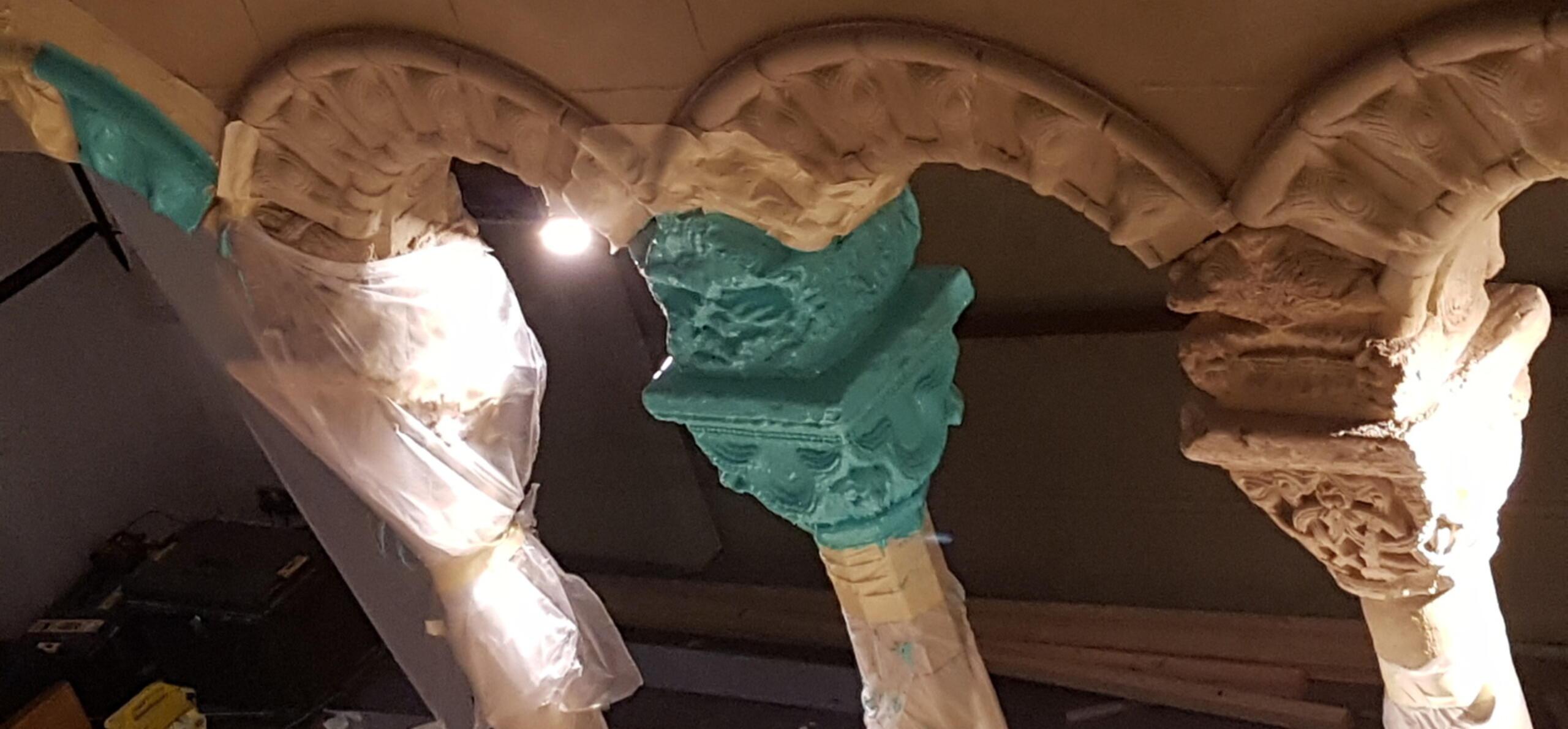Or how we made the new Story of Reading Gallery!
So how do you go about creating a new permanent museum gallery? Well you need a good mix of time, money, expertise and attention to detail.
You may have noticed that much of the museum’s ground floor gallery has been out of bounds since October 2017 while we create a brand new Story of Reading Gallery. The first stage of this new gallery opens on 12 February 2018, part of our wider Reading Abbey Revealed project.
Our preliminary work on this new gallery started back in 2010 when we first started thinking about the interpretation we needed for the wider Abbey Quarter. We soon realised we needed a new display and visitor centre to tell the story of Reading’s royal abbey and show how it shaped our town. The best way to do this was to update the local history gallery (then called Reading : People & Place) on the Museum’s ground floor. This gallery was starting to look tired and out of date, and we were already planning its redevelopment. A new-look 'Story of Reading Gallery' was one of the ways we could make the wealth of historic artefacts and information about the Abbey easily accessible to the public - the project was also an exciting opportunity to extend the Museum’s work beyond its physical walls.
By 2013-14 we were developing initial ideas for a grant application to the Heritage Lottery Fund (HLF) and also wanted to see what local people thought of our plans, so we launched an online survey, receiving 1156 positive responses from the community. A phenomenal 97% supported RBC’s application to the HLF to conserve and interpret the Abbey Quarter.
The [Abbey] site needs to be made safe and given appropriate interpretation so that the people of Reading and visitors to the town can fully appreciate the rich history of our town and this site in particular
- Comment from online survey 2014
Funding secured from the HLF
In 2014 we successfully secured our round 1 development funding from the HLF so could start more detailed work on the plans for the new museum gallery and other interpretation across the Abbey Quarter. We started by appointing interpretation design consultants to work with us to develop the detailed plans and costing that were needed for our round 2 submission to HLF. We also carried out a further public consultation looking in more details about what things people would like to know more about as part of our interpretation plans.
Another 1,053 people completed an online survey – virtually all participants agreeing that the Abbey was an important part of Reading’s history and identity (99.5% agreed or strongly agreed with this statement) and 91% supported the creation of a new exhibition about the Abbey at Reading Museum.
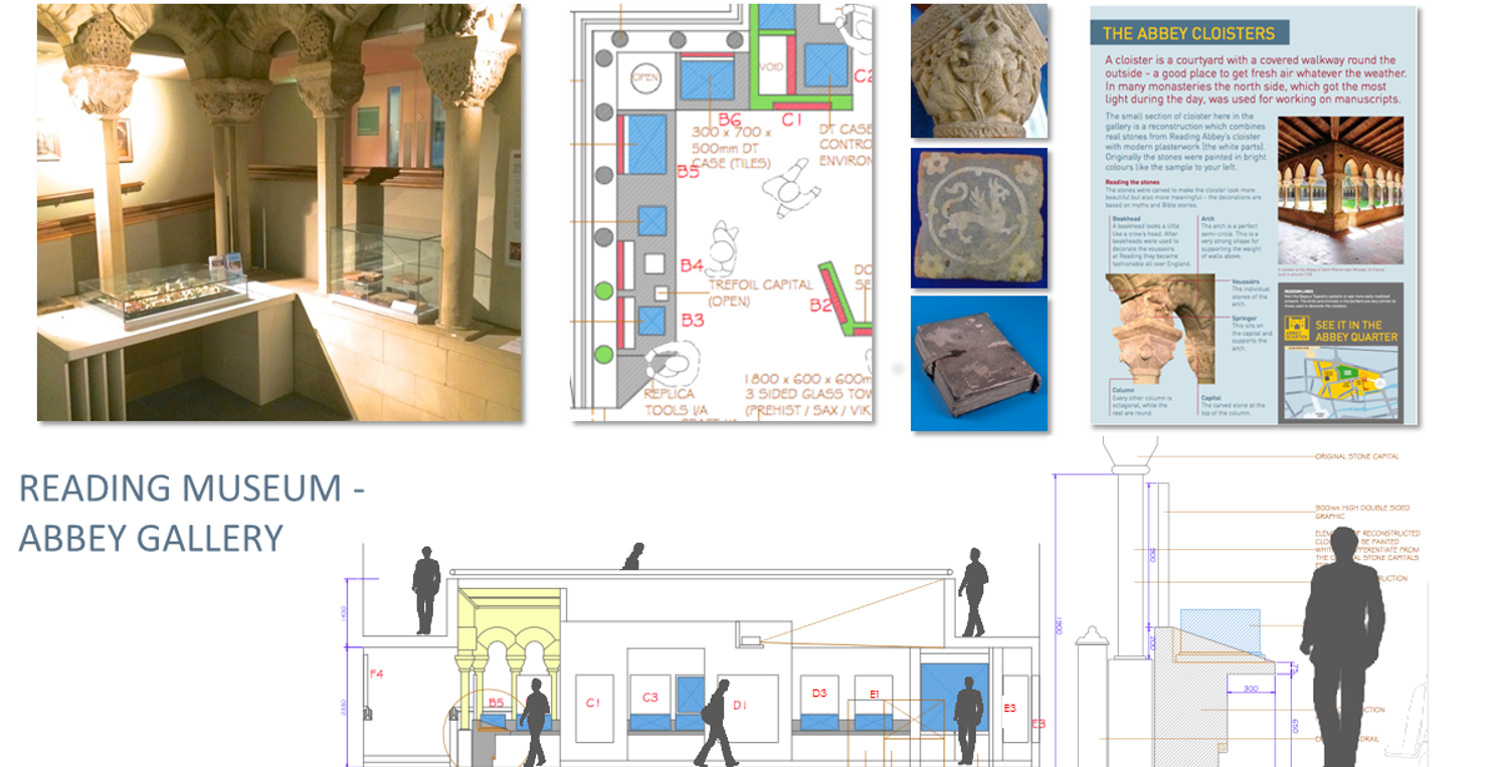
Plans, designs and objects for the new Story of Reading Gallery
Planning the new Gallery
The next step was to draw up a full interpretation plan for the Abbey Quarter, including the new museum gallery, looking at what we wanted to do, who it was for (in museums we call this audiences) and of course how much it will cost (within budget)! To keep within budget there were some things that couldn't change such as the position of the Oracle gates in the centre of the gallery.
We wanted the interpretation to encompass several thousand years of history from the hand tools left by the earliest humans to live in and around Reading to the present day. Within this very broad timeframe the interpretation would focus on the history of Reading Abbey from its foundation by Henry I in 1121 to its closure in 1539 as part of Henry VIII’s dissolution of the monasteries and subsequent destruction. We also wanted to tell the parallel story of the development of the town which surrounded and supported the Abbey, and of the decay and eventual preservation of the Abbey ruins after the Dissolution.
We also wanted:
- To explain the scale, quality and rich colour of the original abbey buildings
- Object-rich displays – with the opportunity to put more collections on display including objects to touch
- Text that would tell the abbey and town’s story but would also give suggestions for other things to see in the museum, suggestions for places to visit in the Abbey Quarter, and give definitions of specialist vocabulary
- Lots of good quality visuals including archive images, contemporary and archive photographs, and special commissioned interpretive illustrations and maps
- Useful infographics including family trees for Normans and Tudors, ‘management diagram’ for monks at Abbey
- Smells and sounds including Reading Abbey’s famous song Sumer Is Icumen In
- Dressing up for both young and old!
- Our interpretation to be physically accessible to all our visitors
After successfully securing round 2 HLF funding in December 2016 we could finally start work on implementing our plans for the new gallery. We began by consulting with experts from the University of Reading so we had access to the latest reserach and thinking particularly about monastic and other religious archaeological sites. Our small collection team and one of Abbey Quarter interns also finalised the object selection - taking photos and dimensions, checking facts, and establishing any conservation needs.
While plans, text and imagery were all being finalised by our interpretation designers, we also set about procuring a contactor to fit out the new gallery, and museum staff started removing objects from the old ground floor gallery ready for the builders arrival in October 2017. Some of the objects went on temporary display in our summer exhibition Reading Abbey Quarter Then and Now which provided us with another practical opportunity to test ideas with the public before we finalised artwork in the autumn.

Museum staff removing objects from the old Reading Gallery
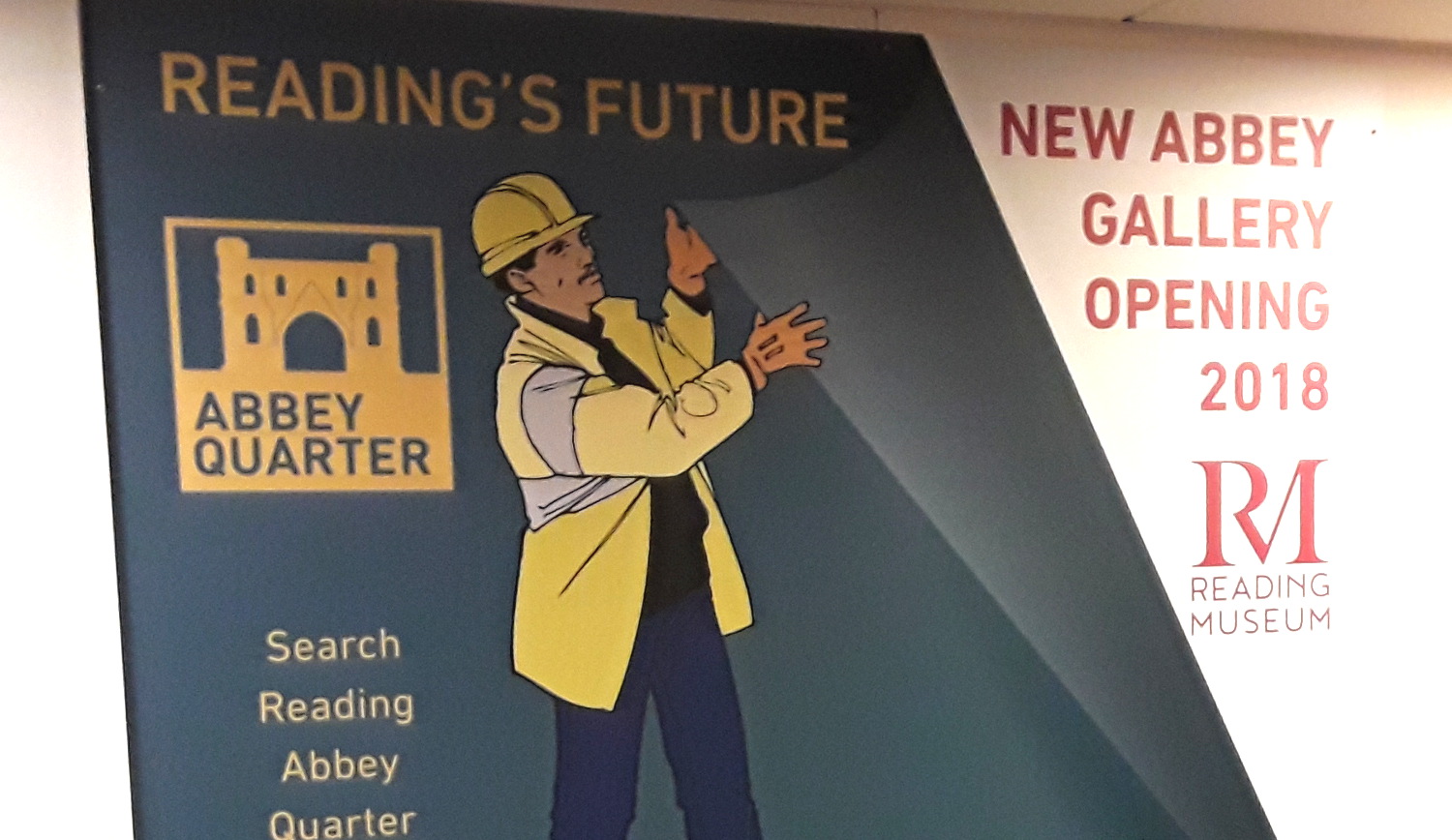
Gallery hoarding while the new displays were being installed in 2017
Building starts
In October 2017 we said goodbye to the old 'Reading : People & Place Gallery' as it was hidden away behind hoardings - though the public could still sneak a peak of the building work from the Bayeux Tapestry Gallery above. As the joiners, electricians, carpet fitters and other skilled people worked on the displays, the project team appointed conservators to prepare and mount the museum objects that will be the stars of the final show.
A completely new section of the cloister arcade reconstruction was also created by taking silicon moulds from one of the existing columns (see top image above). The new column was installed and painted to show how it would have looked in the 12th century (see image below). By December the finishing touches were the installation of display cases (once an alternative source for the worktops had been found due to a Europe-wide shortage as a shipment had been delayed in South Korea!) and the main graphic panels.
As you read this blog we will be installing the objects in their brand-new cases ready for the officially opening by the Mayor of Reading on 12 February 2018. We hope you can visit soon and see the final result of everyone's hard work for yourself.
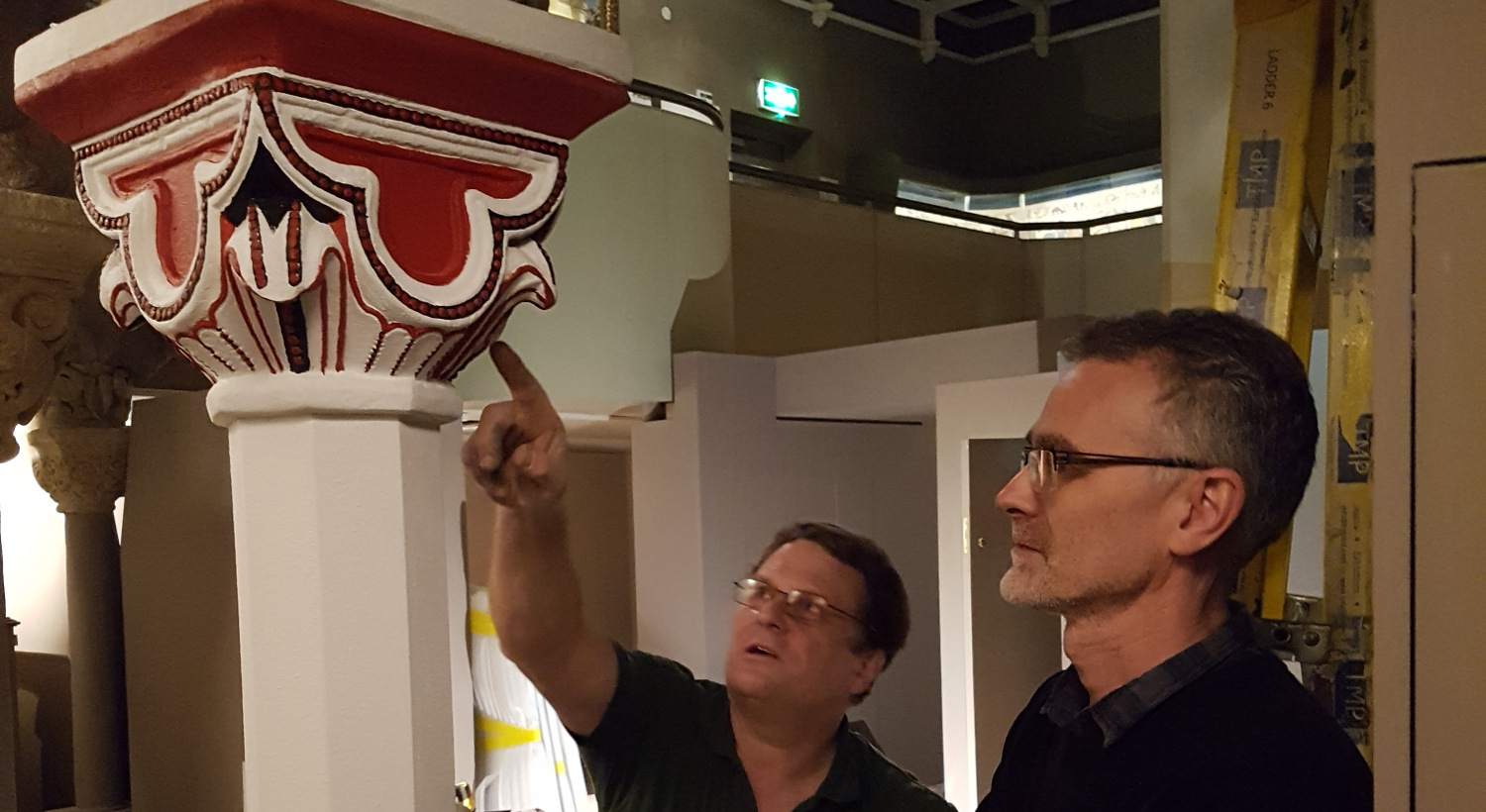
A new replica column has been added to the existing cloister arcade reconstruction to show how they were orginally painted in bright, bold colours
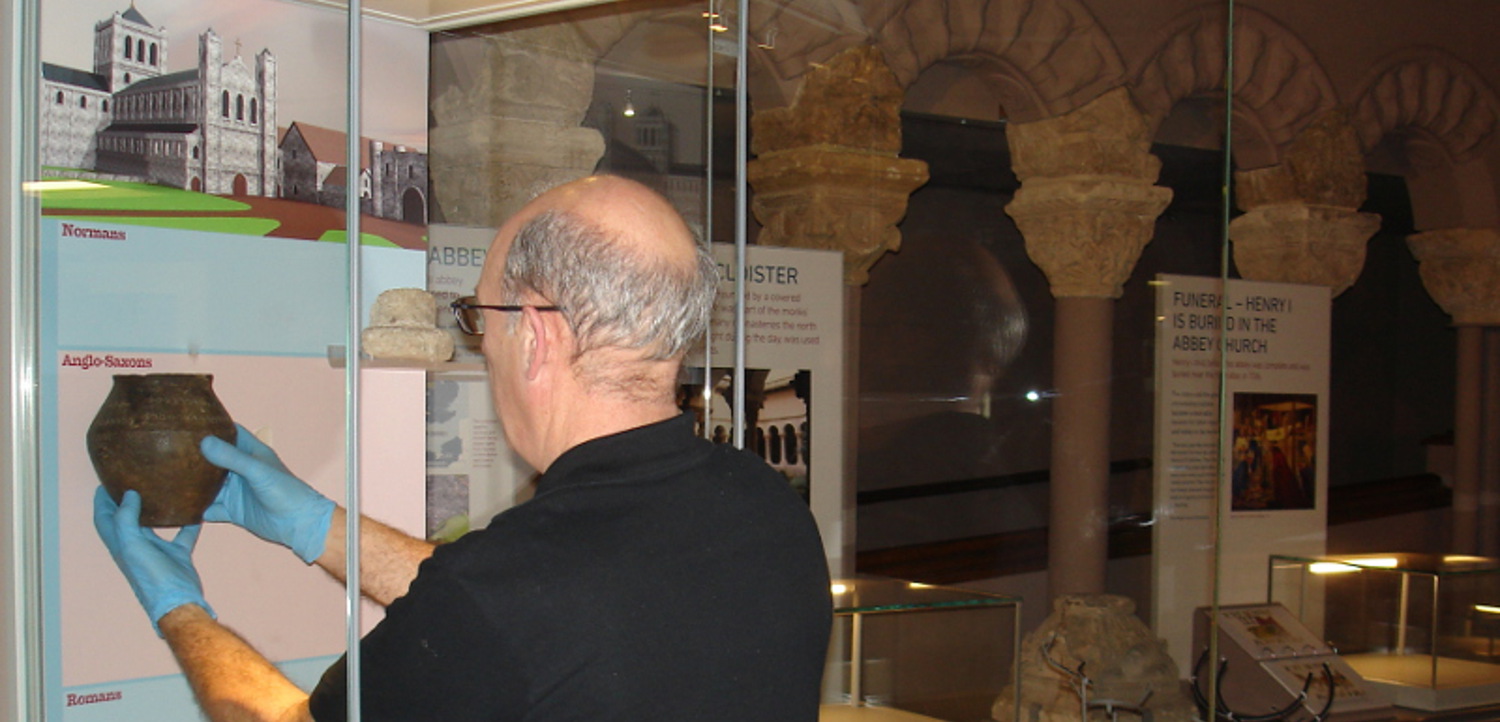
Objects being installed before the Story of Reading Gallery opens on 12 February 2018
Update Spring 2019
In early 2019 we will reveal a new look to rest of the ground floor galleries at Reading Museum, complementing the new Reading Abbey displays discussed in this blog.The second stage of the Story of Reading Gallery was part of wider changes across the Town Hall, including upgrading the café, shop, reception and toilets. The new look museum gallery has two zones, a flexible welcome area for visitors and new displays that continue Reading's story after the abbey up to the present-day. You can find out more on our second blog The Story Continues.
